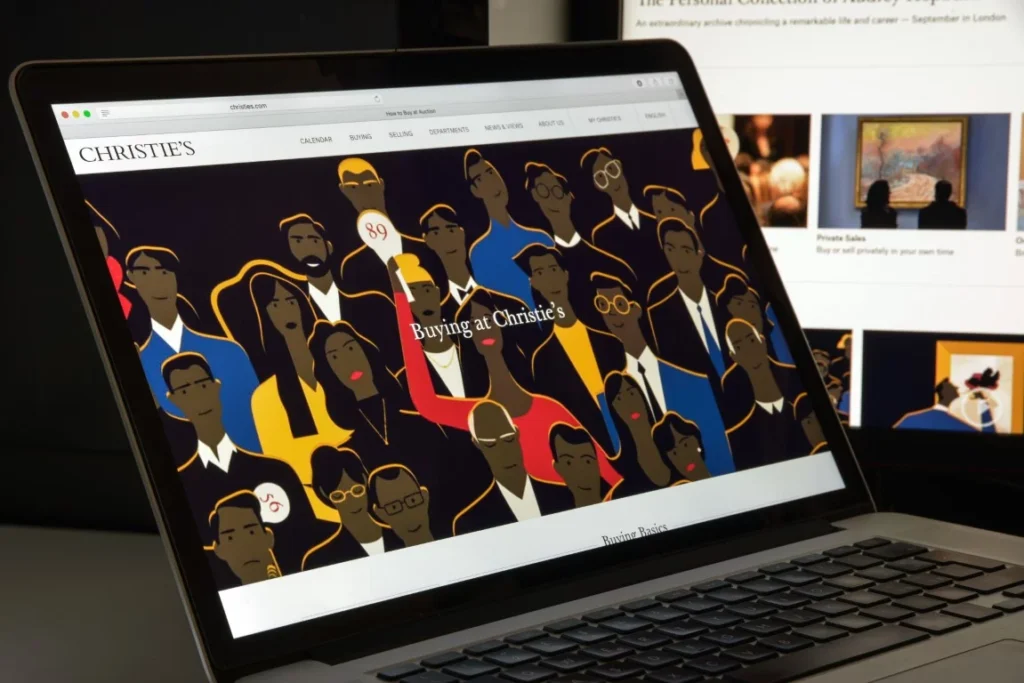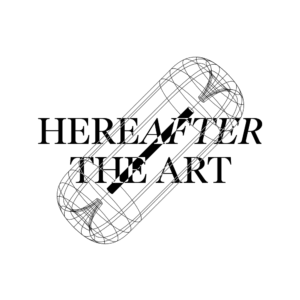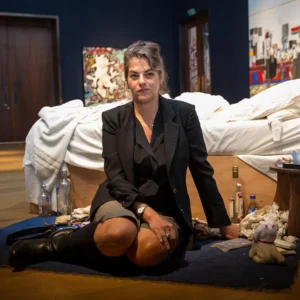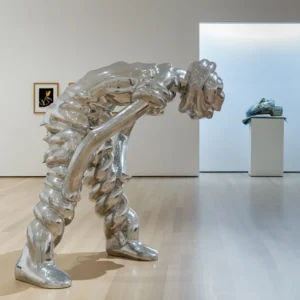The COVID-19 pandemic changed everything. The art world was no different.
Let’s look at some of the specific ways that the pandemic changed the field, as well as some of the new art trends shaping the future of art as we move into a post-COVID world.
Discover, Buy, and Sell Art Online
Lockdowns forced people to ask themselves, “Where can I find art online?” Rather than having local galleries or museums to peruse, people had to discover art on their own, particularly through the burgeoning platforms for NFTs (see our article) and on Instagram.
That led to an increase in direct contact and engagement with artists. That connection to potential buyers is a boon for young creators, especially those able to harness the power of social media for artists.
The art market made a major digital pivot as well. Online-only auction sales from the big three houses (Sotheby’s, Christie’s, and Phillips) blew past $1 billion in 2020—a 524% increase over 2019 levels.
Meanwhile, some artists created new kinds of hybrid art exhibitions, ones that could be discovered and explored online.
In 2020, Simon Denny created Mine—exploring data, mineral, and cryptocurrency extraction. This appeared to the public in Dusseldorf, but Denny also presented a version of the art exhibit in Minecraft. The physical exhibition also included augmented reality (AR) elements, which we will look more into below.
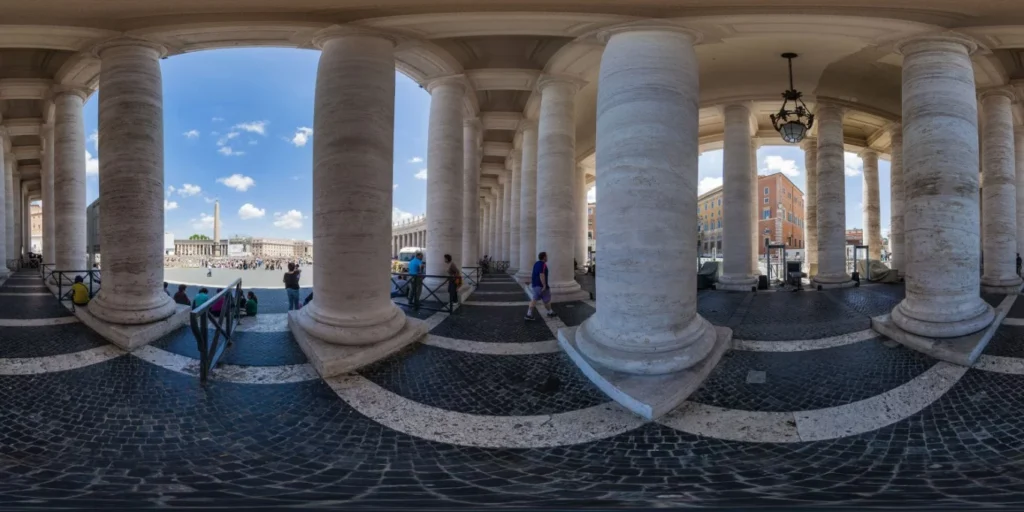
Explore Art with Virtual Reality and Augmented Reality
Many institutions had been working with digital art shows and virtual reality (VR) before the pandemic. Even the Vatican created a VR experience in 2015.
But with their doors shuttered, art institutions began relying on these features. It went from an experimental side project to the central way museums could stay relevant with a public stuck at home.
These weren’t limited to people with expensive VR headsets. For example, the Guggenheim Museum in New York partnered with Google to create a Street View experience of their stunning collection.
As we turn the corner and emerge out of the pandemic, these advances are not going away.
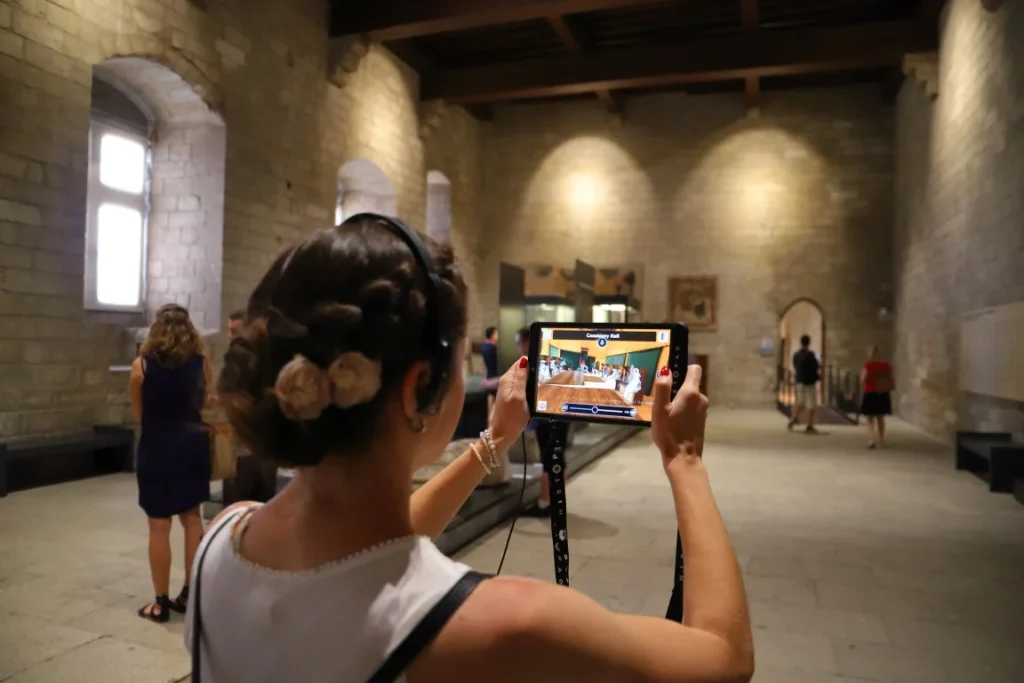
In fact, major art institutions like the Metropolitan Museum of Art and many others are working with developers to produce AR apps to enhance a trip to the museum.
Unlike VR, AR can use the ubiquitous smartphone to project visuals into your surrounding world. Artists are now expanding their work into the digital space using AR.
KAWS famously created a Times Square AR event allowing people to view one of his Companions hovering above New York City, and Cao Fei’s AR integrated Blueprints at London’s Serpentine Gallery received rave reviews.
Artists of Color on the Rise
The explosion of interest in artists online has combined with a growing global audience. And because of the push for connecting to artists directly, we are seeing an unprecedented diversity of voices in the conversation and in the art market, coinciding with a public reassessment of race.

Exhibitions like Codeswitch by Sanford Biggers are now much more common. In Codeswitch, Biggers returns to the traditional form of quilting with a focus on identity.
The Museum of Modern Art recently presented Reconstructions: Architecture and Blackness in America. This curated collection dived into the very structure of American cities and architecture, allowing black artists to examine our shared environment through the lens of race.
This new bloom of diversity in both the artists gaining attention and the people looking for art was increased by the online shift from COVID-19, but there is no question that many other forces will keep this from being a passing trend.
That’s true of all of these changes. While COVID-19 accelerated them, they were all already in motion. The crisis has no doubt changed the art world forever, but art itself will continue to cut its own path into the future. All of these trends share a single thread: making art radically more available to all people.


